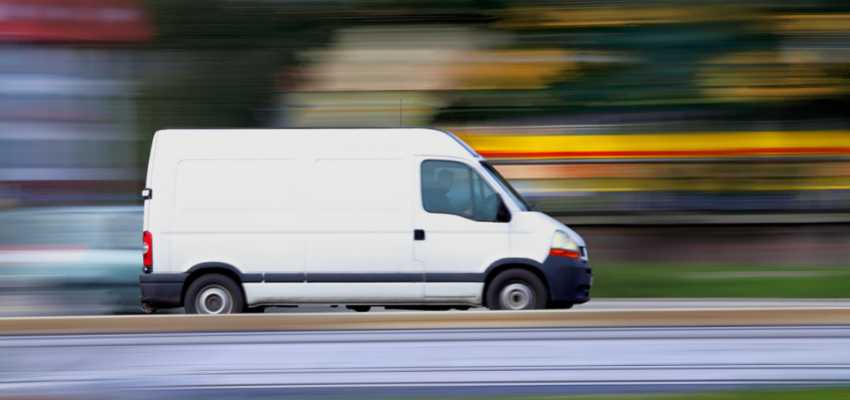Show:
How can route optimisation save you 20% on fuel usage?
A quick guide to lowering your fuel costs
Fuel costs can make or break your bottom line. Like you, we’re always striving for ways to lower costs and fuel efficiency is no exception.
With rising fuel costs impacting the supply chain, it’s never been a better time to become more fuel efficient.

Did you know that optimising your routes can save you 20% on fuel costs?
This guide will show you how to do that. We’ll cover eight key ways you can optimise your fleet for fuel efficiency with the trucks and vans you already have. Let’s get started.
Research shows you can reduce fuel usage by 20%
Research has shown us that route optimisation can reduce fuel costs by a whopping 20%. Another study found that the more unexpected disturbances there are on a route, the more important it is to use route optimisation (if efficient fuel usage is your goal). In other words, the more times your run is disturbed (think: traffic congestion, a meal stop, a sudden pickup job), the more you need route optimisation to keep your costs down.
Four steps to lower your fuel consumption
It’s clear that route optimisation can lower your fuel usage and help your bottom line. But how will it do that? Well, it’s not just one magic button.
When you optimise your routes, you can be sure you’ve set the most efficient routes possible. Which means you’ve taken into account not just where your vehicle is going, but what’s in it and the needs of the person driving it.
Let’s look at those closely.
1. Deliver the heaviest items first
The total weight of your vehicle can have a really big impact on your fuel consumption levels. If you can optimise your routes to ensure that you deliver the heaviest items first, you notch up a quick win for fuel efficiency. And on the flip side, when picking up, collecting the heaviest items last means you’re not paying to carry them around all day, but simply to transport them back to your depot.
Intelligent and integrated route planning software can take all of this into account in moments—saving your dispatch team hours—automatically building your run so that what is being picked up or delivered is also accounted for.
But that’s not all it will optimise for, a fully-featured route optimisation software will also be able to plan around combining your pickups and deliveries.
2. Combine pickup and delivery
Allocating both deliveries and pickups to the same vehicle can significantly improve efficiency and turnaround times. Using route optimisation means that one vehicle and one driver can carry out both operations. Which means less of those costly empty runs.
This is another task that would take your dispatch team considerable time and effort to do manually. Route optimisation software can quickly and easily manage pickups and deliveries as part of a single planning process. Some of your customers may even require this as part of their production process – to take away empty vessels that can’t be stored on site.

3. Maximise your vehicle loads
Empty space in your vehicle is space that could be being used to make you money. Instead, it’s adding to your cost per delivery. It makes sense to make efficient use of every cubic metre of cargo space. A full-featured transport management system (TMS) with route optimisation will have up-to-date volumetric data for your freight. In other words, you will know exactly what freight can efficiently fill which vehicle.
Using route optimisation reassures you with runs optimised for maximum vehicle fill, while also considering all of the other constraints. It takes the headache away for your team and frees their time up for other tasks.
Whether you’re moving groceries down the Princes Highway, or timber along the Western Distributor, maximising the volume carried per vehicle means you’ll have fewer vans or trucks on the road and reduce your operational costs.
4. Identify and eliminate deviations from the plan
It’s all well and good to have an efficient route, but is it being followed? Is your driver covering extra kilometres every day to eat lunch at a particular spot? Is there one customer site that makes your driver wait 30 minutes before they can unload? If you don’t know exactly what the problem is, you can’t eliminate it.
When you integrate driver and vehicle tracking information with your route planning software, you can compare real-world performance with your optimised plan. For example, the data will show you if a route was longer than expected, or if a driver hasn’t arrived at the expected time. You can then present the data during your driver debrief and work out together how to avoid the problem next time. What used to be very hard to know has become highly visible.
How else can you reduce fuel usage?
Beyond using route optimisation, there are some other processes you can optimise to lower your fuel usage.
Fleet maintenance
Your fleet is the backbone of your operation. Regular maintenance is key to your vehicles remaining as fuel efficient as possible. Things like fluid changes or tyre rotations will help to maintain a longer vehicle life, but it also keeps them running as efficiently as possible.
A fully featured TMS will have comprehensive fleet maintenance functions. Using the software allows you to easily keep track of vehicles and log any issues. Every driver can inspect their vehicle before their run, and your fleet managers can stay up-to-date with every vehicle at all times. If the team finds any maintenance issues, the vehicle can be repaired. Keeping things in good running order means more fuel savings and longer lasting vehicles.
Driver training and tracking
We touched on this earlier, but a comprehensive driver training program will return your investment time and again.
It can be helpful to debrief after a run, but it’s even more helpful to give them a solid base to start from. Drivers need to be trained properly with an eye to fuel efficiency (amongst other things). Drivers don’t always realise the value of careful fuel management, so fuel efficient driving practices are often overlooked.

By simply adjusting driving habits, they can make a big difference to their fuel usage on every single run.
The other key function for fuel efficiency is driver GPS tracking.
You’ll improve operations management, because automated driver tracking means less disruption on the road and faster deliveries. You’ll see exactly where drivers are and whether or not they’re on schedule. There’s no need to interrupt their work just for customer updates.
And you’ll also triage problems efficiently and easily. Help drivers choose better routes in real time, saving on fuel every time you re-optimise their route. Know how long drivers will be out, so you can plan their next trips and seize opportunities for them to handle last-minute jobs or missed pickups in the area.
Vehicle weight management
Along with optimising for parcel weight during pickup and delivery, you should consider the weight of your vehicle for fuel efficiency. A vehicle that’s carrying unnecessary weight will use more fuel. Remove any excess cargo or equipment to optimise their fuel performance. Even small items can make a big difference to the overall fuel economy of a vehicle.
Fuel sourcing
This will seem obvious, but it’s also important to consider not only what fuel you’re using but where you’re buying it from. Sourcing the cheapest fuel can make an enormous difference to your overall fuel cost.
Over to you
Hopefully this has been a useful explanation of how you can reduce your fuel usage and lower costs (with the team and trucks you have today).
It needs no repeating but we’re going to anyway – optimising your fuel usage is fundamental to a healthy profit margin. You probably noticed something along the way: these simplified processes make for a happier, less stressed team of workers too.
Has it got you thinking about implementing a TMS and making the most of route optimisation? It can be a really big change. But it’s, quite simply, the future of transport. Technology will automate many tasks within the supply chain and we’ll all move freight faster and more accurately. Read our in-depth guide to TMS implementation to find out what’s involved.

 Return to Previous Page
Return to Previous Page








